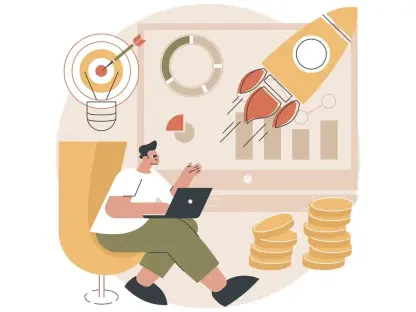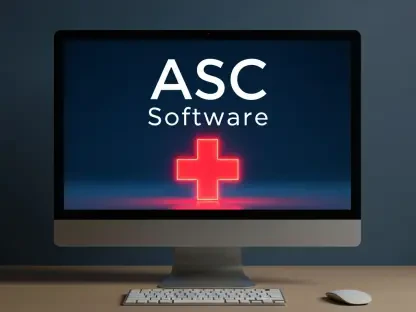Setting the Stage for a Transformative Market Shift
In the dynamic realm of hospitality technology, a staggering projection captures attention: the global market is expected to soar to $12.5 billion by 2030, driven by a robust 14% compound annual growth rate (CAGR). At the heart of this evolution stands PAR Technology, a veteran player making waves with a bold strategic pivot. By prioritizing long-term software-as-a-service (SaaS) scalability over immediate revenue gains, the company has deferred multimillion-dollar task platform rollouts to chase high-value global point-of-sale (POS) deals. This move raises critical questions about balancing short-term financial stability with ambitious growth in a competitive landscape. This market analysis delves into the trends, data, and projections surrounding PAR’s strategy, exploring its implications for stakeholders and the broader hospitality tech ecosystem.
Decoding Market Trends and PAR’s Positioning
Current Dynamics in Hospitality Tech Adoption
The hospitality tech sector is undergoing a profound transformation, with businesses increasingly gravitating toward cloud-based, integrated platforms to streamline operations. A striking statistic reveals that 78% of hospitality tech buyers now prioritize unified solutions over standalone products, reflecting a demand for efficiency amid digitalization. PAR Technology is capitalizing on this shift by bundling offerings like PAR POS, Punchh loyalty, and GoSkip retail, a strategy that has yielded a record number of multi-product deals in the second quarter of this year. This alignment with market preferences positions the company as a frontrunner in meeting the industry’s evolving needs.
Financial Metrics and Strategic Trade-Offs
Diving into financial data, PAR’s recent decisions reveal a deliberate trade-off. Deferring task platform rollouts has led to a temporary dip in key metrics, including a 13% organic growth rate in Operator Cloud Annual Recurring Revenue (ARR), which lags behind historical trends, alongside a $2.5 million impact on adjusted EBITDA. Despite these challenges, the company showcases resilience with an improved adjusted EBITDA of $5.5 million and a subscription service gross margin of 66.4% on a non-GAAP basis. Cash reserves of $85.1 million further buffer against volatility, illustrating a calculated gamble to secure multi-year, tier-one POS contracts that promise sustainable revenue streams.
Cross-Sell Opportunities Driving Scalability
A deeper look at PAR’s operational strategy highlights the power of cross-sell momentum. The “Better Together” approach, integrating multiple SaaS solutions, has fueled a 21% organic growth in subscription services and a 49% year-over-year ARR increase to $286.7 million across its Engagement and Operator Clouds. With a pipeline exceeding $20 million in contracted deals, the company demonstrates scalability in a fragmented market where competitors often struggle with disjointed offerings. This trend toward bundled platforms not only enhances customer retention but also sets a benchmark for operational efficiency in the sector.
Global Expansion and Competitive Challenges
Expanding into global markets, PAR targets tier-one POS deals, navigating diverse regulatory and cultural landscapes. Partnerships with prominent brands like Popeyes and RaceWay underscore adaptability, yet challenges such as trade policy uncertainties and regional competition loom large. Leveraging AI-driven innovations through acquisitions like Assessment Assist AI provides a competitive edge, aligning with the industry’s push for smarter, interoperable systems. However, missteps in localization or overlooking smaller markets could hinder progress, emphasizing the need for meticulous planning in international growth.
Forecasting the Future of Hospitality Tech
Emerging Technologies Shaping the Landscape
Looking ahead, the hospitality tech market is poised for disruption by emerging technologies like artificial intelligence and machine learning. These tools promise to redefine customer engagement and optimize workflows, areas where PAR is already investing heavily. As businesses grapple with economic pressures like inflation and labor shortages, the adoption of scalable SaaS solutions is expected to accelerate. Projections suggest that companies prioritizing innovation and integration could dominate by the end of the decade, provided they manage near-term execution risks effectively.
Economic and Regulatory Influences on Growth
Beyond technology, external factors will shape the market’s trajectory. Economic constraints may push more hospitality businesses toward cost-effective, subscription-based models, benefiting players like PAR with robust SaaS offerings. Simultaneously, tightening data privacy regulations could impose stricter compliance requirements, necessitating agile responses from tech providers. The potential for tier-one deals to materialize over the next few years adds a layer of anticipation, with PAR’s strategic focus positioning it to capture significant market share if execution aligns with vision.
Long-Term Projections for Market Leaders
Analyzing long-term trends, the hospitality tech sector’s growth to $12.5 billion by 2030 signals immense opportunity. PAR’s current ARR guidance, revised to mid-teens growth for the year, reflects caution, yet the pipeline strength and high margins suggest a rebound potential. Industry forecasts indicate that firms embracing global scalability and digital transformation will lead, especially if they convert strategic sacrifices into recurring revenue. PAR’s trajectory, if sustained, could see it achieving positive operating cash flow by late next year, marking a pivotal milestone in its SaaS journey.
Reflecting on Strategic Insights and Next Steps
In retrospect, the analysis of PAR Technology’s pivot illuminates a calculated balance between immediate financial trade-offs and ambitious long-term goals in the hospitality tech arena. The company’s focus on cross-sell momentum, global expansion, and integration stands out as key drivers amid a rapidly digitizing market. For stakeholders, the path forward involves monitoring execution closely, particularly in securing tier-one POS deals and maintaining operational efficiency. Hospitality businesses are encouraged to explore bundled SaaS solutions to stay competitive, while investors weigh the robust pipeline against short-term volatility. Ultimately, tracking progress toward financial milestones over the coming quarters offers a critical lens for evaluating whether these bold strategies translate into lasting market leadership.









